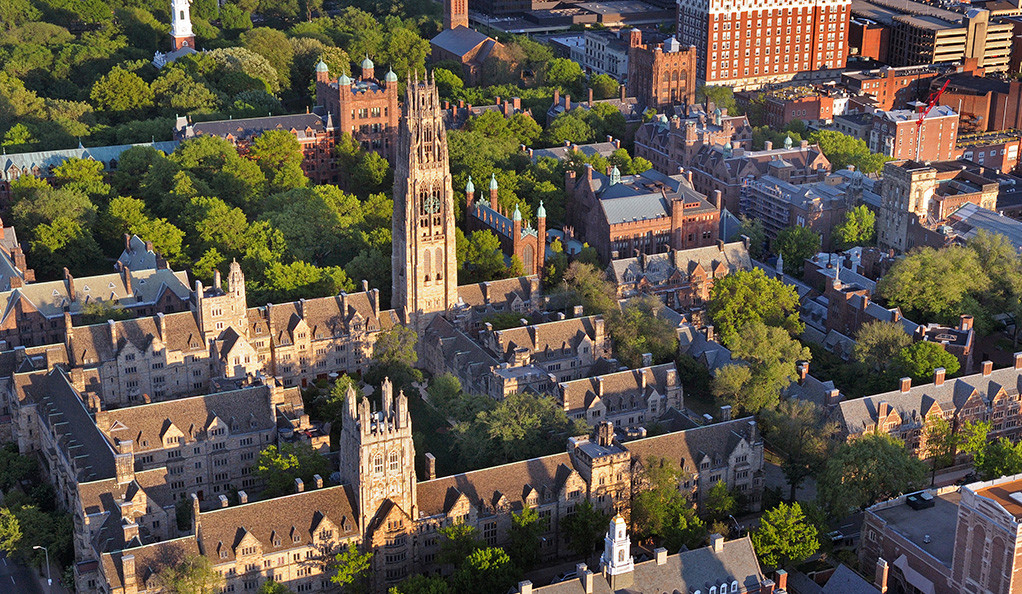
Yale News
In the midst of the global pandemic, Yale has quietly continued to solicit funds during the initial phase of its most recent capital campaign.
During the silent phase of this campaign, the Office of Development has been soliciting donations from a smaller group of wealthy alumni and refining its messaging before going public next year with a campaign name, logos and explicit fundraising goals. Currently, the campaign target is $6 billion, according to Associate Vice President for Development and campaign director Eugénie Gentry. Since the campaign’s start in July 2018, the office expects to have committed between 40 and 50 percent of that goal by next October.
“It moves up our level of giving and our level of engagement with alums as a result of a concerted, focused effort over the campaign period,” Gentry said. “And in doing so propel[s] the institution forward to a new level of giving and involvement that can be sustained once the campaign is concluded.”
When the coronavirus pandemic first struck the U.S., donations paused between mid-March and mid-May, Vice President for Alumni Affairs and Development Joan O’Neill told the News. Yale canceled its annual solicitations, and alumni volunteers who would have held gift conversations at reunions felt uncomfortable asking people to donate during the financial downturn.
But June came on strong, O’Neill said, and the campaign ended up with a successful fundraising year. Alumni became particularly interested in donating to financial aid and the University’s efforts toward diversity, equity and inclusion during the economic slowdown and instances of police brutality this summer, she said.
Once the campaign goes public and the University reaches out to more people, the effects of the current economic crisis on giving may be more apparent, O’Neill predicted. People whose jobs may not be stable during the pandemic — including restaurant owners, artists or younger alumni — may be less likely to give to Yale. O’Neill added that this same group of people tends to give to Yale from their income, as opposed to other alumni who give based on other assets, such as investments.
“For whatever reason, the markets are stronger than any of us can explain,” O’Neill said. “They may make us nervous, but in reality a lot of people who have their money in the markets may not be impacted as much.”
The goal of a capital campaign is to substantially increase the amount given to the University each year, even after the campaign ends. Before Yale’s last capital campaign began in 2006, the University was raising about $250 million per year, Gentry said. The campaign brought that number up to more than $400 million per year. In recent years, the University has accrued about $600 million per year.
Though $6 billion may seem like an astronomical sum, it is roughly comparable to Yale’s peer institutions. In Harvard University’s last capital campaign, which closed in 2018, it raised $9.6 billion against a $6.5 billion goal. Northwestern University has raised almost $5 billion in the past six years of its most recent campaign.
Yale’s campaign will finance developments across the University. Chief priorities include constructing a new drama building, financing scientific innovation and transitioning the Jackson Institute of Global Affairs to a full-fledged professional school. Additionally, the campaign aims to increase financial aid and chip away at graduate and professional student debt.
The campaign has been entirely remote since March. The office, deans and University President Peter Salovey have continued meeting with potential donors over Zoom. With people they know well, the conversation has flowed naturally, O’Neill said. But she added that it is harder to build rapport through a screen.
Similar to its work training professors, the Poorvu Center for Teaching and Learning has instructed the office on how to use Zoom, giving advice on tactics such as when to utilize breakout rooms.
Monty Shepardson, deputy director of principal gifts development, said that though the method of communication has changed, the content of conversations with potential donors has stayed the same. In some cases, she said, it has been easier than ever before to schedule virtual meetings with alumni.
Campaigns are almost never smooth sailing, O’Neill said. Because they last for many years, there is usually an economic downturn at some point.
“You have time beforehand and you have time afterwards,” O’Neill said. “You pay attention to people and you show them how much the University values them, so that when they feel like the time is right, Yale gets back at the top of their list.”
The campaign’s tentative goal to raise $6 billion could change as the silent phase progresses. And meeting the stated aim does not mean the University will have that amount in cash — the campaign target includes both gifts the University has and gifts that people have committed to giving in the future.
According to O’Neill and Gentry, the ultimate aim of a campaign is to meet or exceed the stated fundraising goal.
“The idea of a campaign is to succeed,” O’Neill said. “Nobody wants to not have a celebration at the end of the finish line.”
The office is considering creative ideas to celebrate the launch of the capital campaign’s public phase, O’Neill said, as the usual black-tie event in New Haven may not be possible by next fall. They are considering a hybrid in-person and remote kickoff.
The University’s last capital campaign, Yale Tomorrow, raised $3.88 billion.
Rose Horowitch | rose.horowitch@yale.edu







